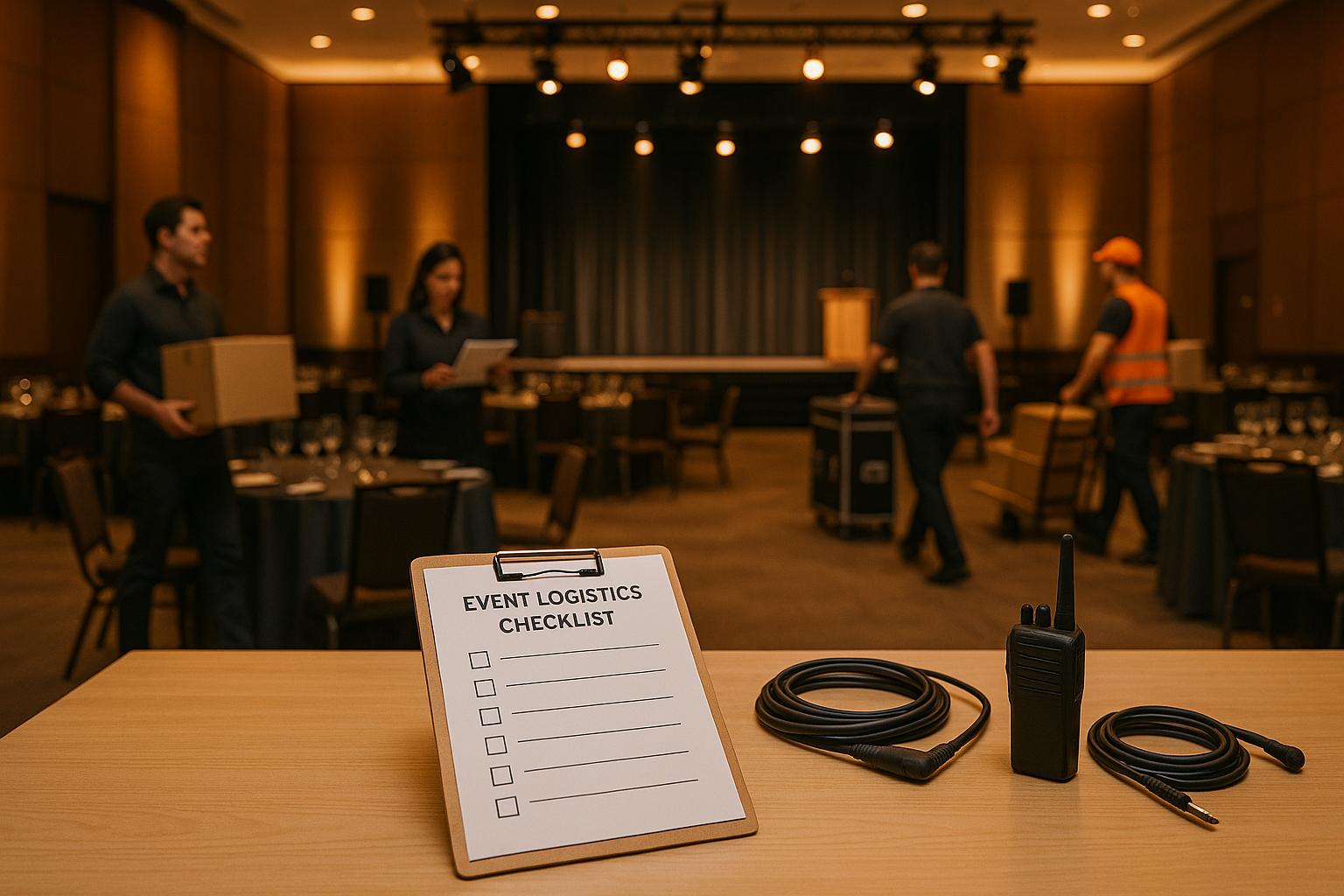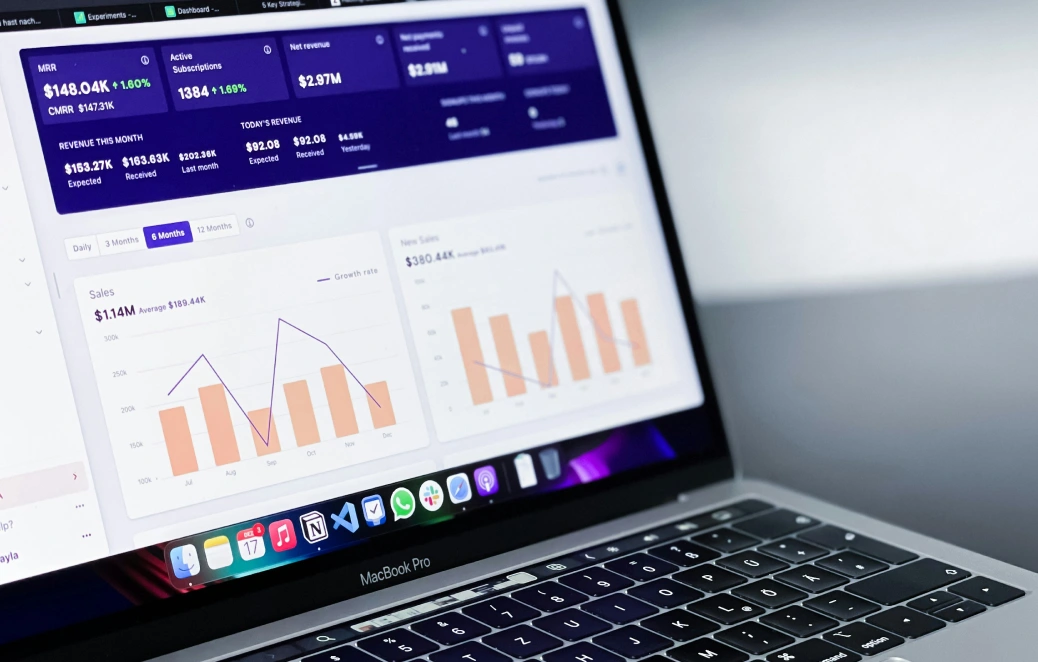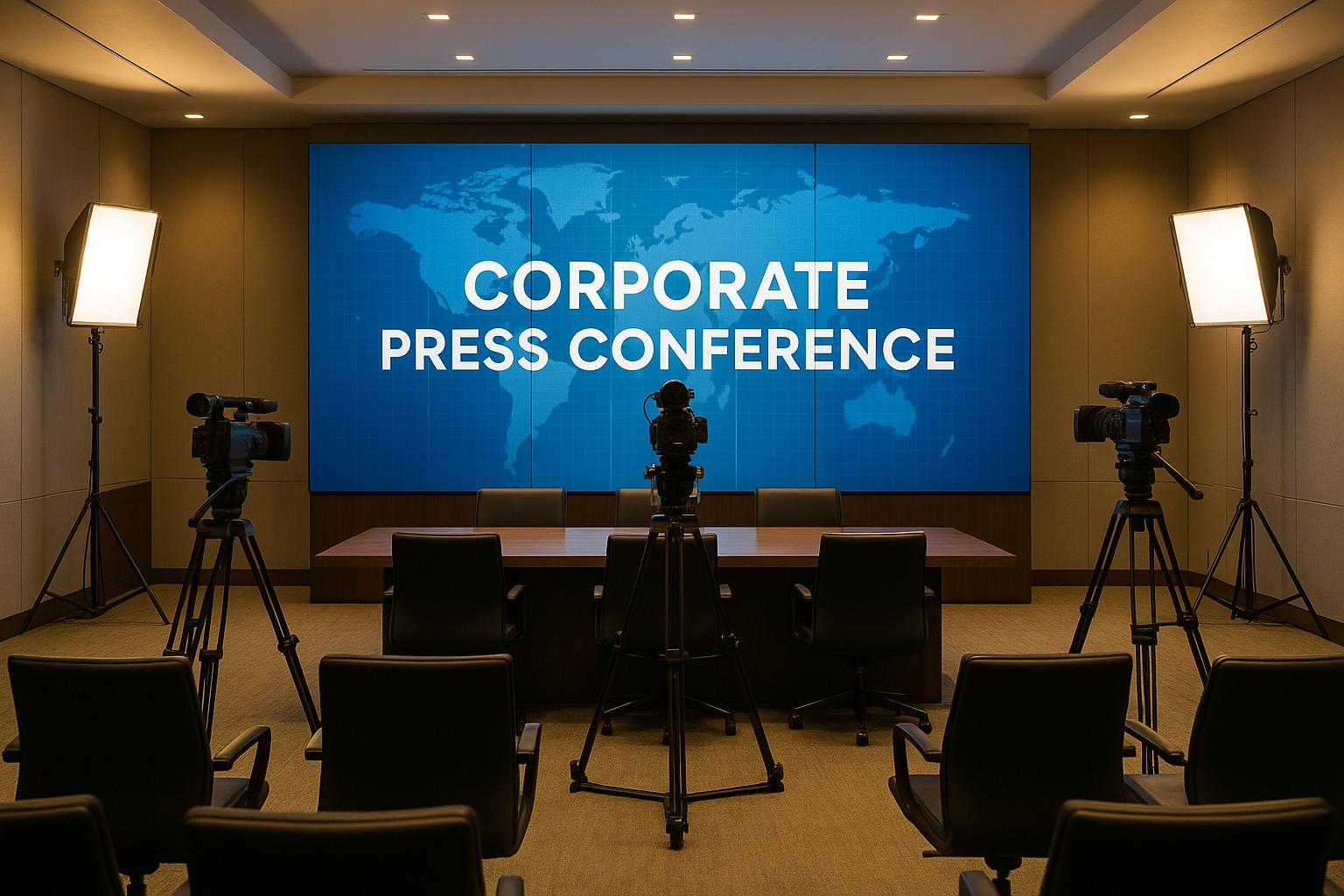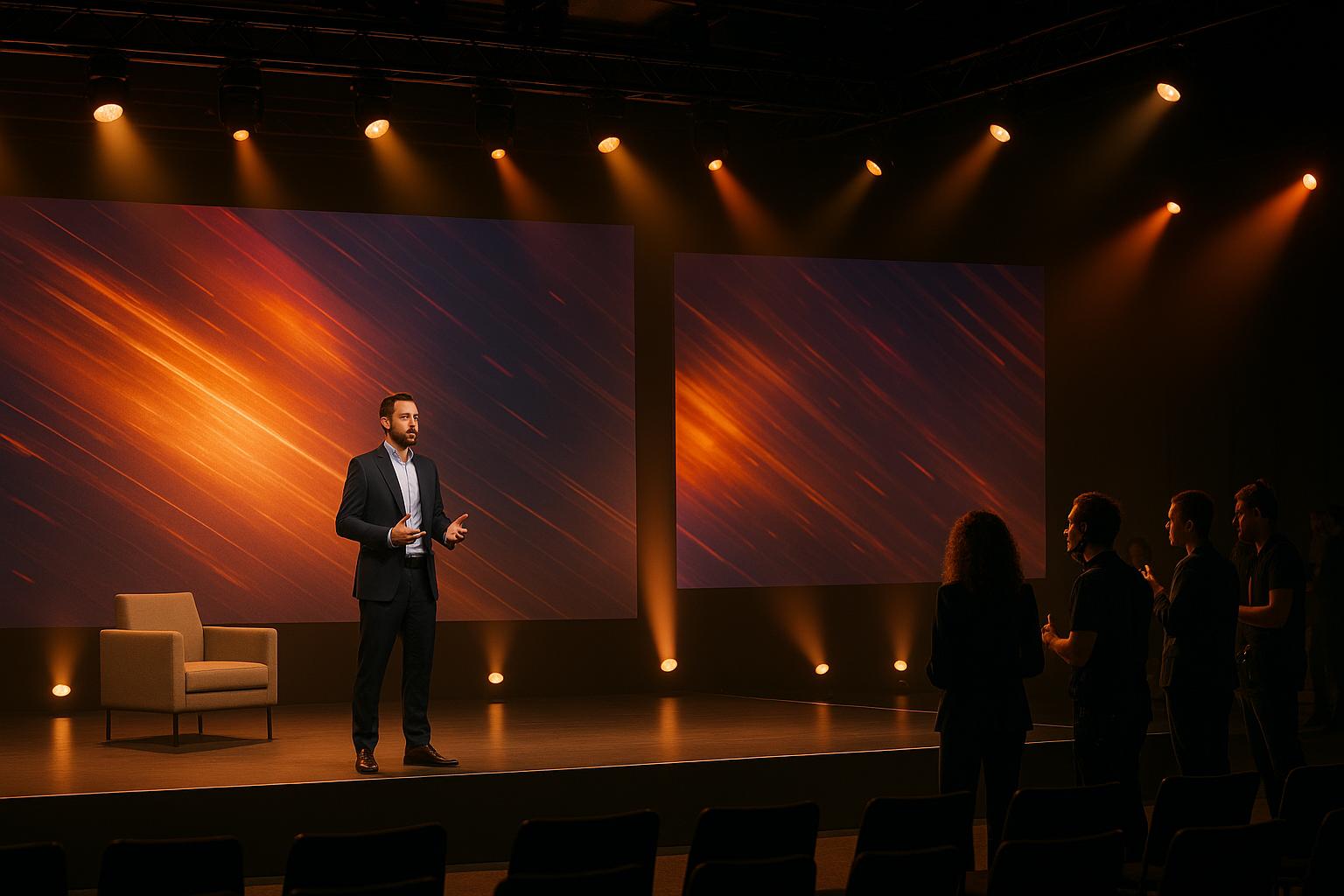Top 5 Challenges in Event Logistics Coordination

Chief Executive Officer

Event logistics can make or break an event. From securing venues during high-demand periods to managing vendors, transportation, and technology, event planners face numerous challenges. Here's a quick summary of the five biggest hurdles and how to tackle them:
- Venue Availability: Finding suitable venues during peak seasons is tough, especially with limited options and high costs. Flexibility with dates and venue types can help.
- Vendor Coordination: Miscommunication and timeline mismatches between vendors can lead to chaos. Centralized communication tools and clear run-of-show documents are key.
- Transportation Issues: Urban traffic, limited parking, and equipment delivery delays can derail plans. Early coordination with local authorities and detailed transportation plans are essential.
- Technology Failures: AV glitches, bandwidth shortages, and power issues can disrupt an event. Pre-event testing, professional AV support, and backup systems are critical.
- Unexpected Problems: No plan is foolproof. Risk assessments and contingency plans ensure you're prepared for surprises.
How To Coordinate Multiple Event Vendors? - Event Management Pro Tips
Challenge 1: Finding the Right Venue
Securing the perfect venue during peak seasons is one of the biggest hurdles for U.S. event planners. Months like May, June, September, October, and January are particularly challenging. Why? Because these periods see a surge in demand, with hotels and event spaces prioritizing high-revenue bookings over smaller or less lucrative events. Late spring and early fall are especially competitive due to favorable weather and an uptick in corporate conferences. Meanwhile, January kicks off with fresh budgets and a flurry of activity, keeping venues in high demand. On top of that, global events can make finding a venue even tougher.
Major international happenings - like sporting tournaments, fashion weeks, and global conferences - often dominate hotel availability in big cities. Add in holiday periods such as Ramadan, Christmas, New Year, and May bank holidays, and it becomes clear why venue options dwindle during these times.
How Venue Availability Affects Event Success
Limited venue choices and inflated costs during peak seasons can put significant pressure on event planners. Higher rates mean tighter budgets, which can force compromises on other aspects of the event. This balancing act - finding a venue that meets logistical needs without breaking the bank - is critical to ensuring an event’s success.
Solutions for Venue Selection
So, how can planners navigate these challenges? Flexibility is key. Start by clearly defining your event’s priorities - what features or amenities are non-negotiable? Being open to alternative dates or less conventional venues can also expand your options and help you secure better pricing. Additionally, sustainability is becoming a deciding factor for many attendees. Nearly 50% of delegates are willing to pay more for events that prioritize eco-friendly practices. This could guide your venue choices and even enhance the appeal of your event.
Challenge 2: Managing Multiple Vendors
After tackling venue selection, event planners face another major obstacle: juggling multiple vendors. Depending on the event, you might be coordinating anywhere from 5 to 15 vendors, each with their own schedules, needs, and ways of communicating. It’s like trying to orchestrate a symphony where every musician is playing from a different sheet of music.
The complexity grows when vendors rely on one another. For instance, the AV team needs the catering layout to position screens correctly. The lighting crew can’t do their job until they have the scenic design details. Transportation planners are waiting on final headcounts from registration. If one vendor falls behind or miscommunicates, it can set off a domino effect that disrupts the entire event.
Common Communication Problems
Two major pain points in vendor coordination are fragmented communication and misaligned timelines. Event planners often find themselves acting as middlemen, passing messages between vendors, which increases the risk of key details being misunderstood or overlooked. Imagine a scenario where the catering team assumes the cocktail reception wraps up at 7:00 PM, but the AV crew plans to start breaking down equipment at 6:30 PM. These kinds of mismatches can lead to chaos.
Another common issue is version control errors. Vendors sometimes work off outdated floor plans, guest lists, or schedules. For example, the lighting team might still be using last week’s layout, while the catering team is working from a revised seating chart sent out that morning. These inconsistencies waste time, create duplicate efforts, and leave teams scrambling to fix things last minute.
And then there’s the budget. Uncommunicated scope changes can lead to surprise costs. Say your decorator decides to add extra centerpieces but doesn’t inform the catering team, who then charges additional fees for working around the larger arrangements. These kinds of missteps can inflate your budget by 15–20%, throwing off your financial planning.
When communication breaks down, schedules slip, costs rise, and the success of the event is put at risk. Fortunately, there are ways to tackle these challenges head-on.
Better Vendor Coordination Methods
To keep everything running smoothly, consider these strategies:
- Centralized communication platforms: Instead of juggling endless email chains and missed calls, use a single platform where all vendors can access updated floor plans, schedules, and contact lists. This ensures everyone is working with the same information in real time.
- Single point of contact management: Assign specific team members to handle communication for different vendor categories. For example, one person can manage all AV-related discussions. This reduces conflicting instructions and ensures clear, consistent messaging.
- Regular check-ins: Weekly calls during the planning phase and daily briefings during event week can help catch potential issues early. These meetings don’t need to be long – even a quick 15-minute update can save hours of troubleshooting later.
- Detailed run-of-show documents: Create a comprehensive timeline that outlines not just the event schedule, but also which vendors are responsible for each task. Include setup instructions, breakdown plans, and key contacts for every vendor team.
- Cross-vendor introductions: Help vendors who depend on each other connect directly. For instance, let your AV team coordinate power requirements with the venue’s technical staff, or have the catering manager discuss table access directly with the decorator. This eliminates the need for you to act as a go-between.
Some companies, like Corporate Optics, simplify vendor management by offering integrated project management. By handling audiovisual design, lighting production, and technical coordination as a single service, they reduce the number of vendors you need to manage and ensure all technical elements work seamlessly together. This kind of streamlined approach can save both time and headaches.
Challenge 3: Handling Transportation and Parking
After coordinating with vendors, the next big hurdle is managing transportation logistics. This covers not just attendees but also equipment, staff, VIPs, and food service vehicles - each with specific timing, access, and space needs. A single misstep, like a delayed equipment delivery or a permit issue at the loading dock, can disrupt the entire setup process.
Transportation and Traffic Problems
Urban settings often bring their own set of headaches. Traffic congestion can delay arrivals and even block emergency access. Obstacles such as roadblocks or barricades can complicate routes, and loading docks often come with strict permit requirements. These factors can easily derail setup timelines if not handled with precision.
Parking is another major issue. Urban venues frequently have limited on-site parking, leaving attendees scrambling for alternative options. Overcrowded public transit and poorly marked last-mile routes only add to the frustration, making it harder for attendees to arrive on time and stress-free.
Transportation Solutions That Work
Here’s how you can tackle these transportation challenges effectively:
Start with early coordination with local authorities. Reach out to city traffic departments and local police weeks ahead of your event. They can provide critical guidance on permits, access restrictions, and traffic flow patterns that could impact your plans.
Shuttle services can simplify attendee transportation immensely. For example, companies like Corporate Optics often include shuttle coordination in their event planning to ensure transportation aligns perfectly with the event schedule. Additionally, provide attendees with detailed parking maps and clear instructions about parking costs, walking distances, backup options, and public transit routes.
When it comes to equipment delivery, timing is key. Schedule heavy equipment, like staging or AV components, during off-peak hours. Work closely with venue management to secure loading dock access and ensure all required permits are in place.
Real-time communication systems can be a lifesaver. Set up dedicated channels - like a phone line or text alert service - for updates on parking availability and traffic conditions. Social media is another powerful tool for sharing live updates on routes and alternative transportation options.
Encourage attendees to use alternative transportation by offering perks for carpooling or taking public transit. Some events even collaborate with ride-sharing services to create designated pickup and drop-off zones, which can help reduce congestion.
Finally, build flexibility into your transportation plan. Urban events are unpredictable, so having backup options ready - whether for parking, routes, or equipment delivery - can keep things running smoothly even when surprises pop up.
sbb-itb-ae35a94
Challenge 4: Preventing Technology and AV Failures
Imagine this: a microphone cutting out mid-speech or a screen going blank during a critical presentation. These kinds of technical hiccups can throw an event into chaos, leaving attendees frustrated and tarnishing your reputation. Unlike transportation delays, which might simply push back a schedule, AV failures can grind your event to a halt in real time. This impacts not just live interactions but also essential digital components.
Modern events are more tech-heavy than ever. Whether it’s live streaming, interactive presentations, audience polling, or hybrid platforms, everything hinges on flawless execution. If these systems fail, you’re not just letting down the people in the room - you’re also risking the engagement of virtual attendees and the credibility of your organization.
Common Technical Problems
Just like transportation or vendor coordination, AV systems demand meticulous planning to avoid last-minute disruptions. Some of the most frequent issues include:
- Equipment compatibility problems: A laptop that won’t connect to the venue’s projector or audio-video sync issues are common when devices, software, or connection types don’t align.
- Bandwidth constraints: Events with heavy internet usage or live streaming can quickly run into trouble without sufficient bandwidth. High-speed, reliable internet is critical for smooth presentations, online interactions, and live polls. Venues often charge a premium for network access and may manage bandwidth on a “first come, first serve” basis, leading to potential disruptions.
- Power failures: Overloaded circuits, faulty wiring, or poor power distribution can shut down equipment at the worst moments.
- Sound system glitches: Feedback loops, dead microphones, uneven audio levels, or total sound failure can make it impossible for attendees to hear speakers, particularly in large venues with challenging acoustics.
AV Solutions That Prevent Problems
To avoid these headaches, it’s all about preparation and proactive measures. Here’s how to keep your event running smoothly:
- Consult AV experts early: Bring in professionals to assess your internet needs, develop cost-effective strategies, and secure reliable services. Companies like Corporate Optics specialize in identifying potential issues weeks ahead of time.
- Plan for bandwidth management: Strategically allocate bandwidth to prioritize critical services and users. Use tools like internet shaping to ensure essential applications - like live streaming - have enough capacity. Remember, upload speed is key for live streaming, and requirements vary by video quality and frame rate. Different groups, such as AV teams, exhibitors, and attendees, will have unique bandwidth needs that must be accounted for.
- Run pre-event tests: Conduct full rehearsals with all presenters, testing every connection and verifying backup systems. Schedule these tests at the same time of day as your event to account for typical network traffic and power conditions.
- Build redundancy into your setup: Have backup microphones, spare projectors, alternative internet connections, and duplicate presentation files ready to go. For critical sessions, consider setting up a completely separate AV system as a fail-safe. Whenever possible, use wired internet connections for reliability, but if Wi-Fi is your only option, ensure it can handle your bandwidth requirements.
During the event, having experienced technical support on-site is a game-changer. Technicians familiar with your setup can troubleshoot issues quickly, preventing minor glitches from escalating. Make sure your team has direct access to the venue’s technical staff and backup equipment for added security.
Active network management is also crucial. Limit unnecessary bandwidth usage by disabling automatic updates, blocking unauthorized streaming, and avoiding unnecessary speed tests. Monitor network performance throughout the event and adjust bandwidth allocation as needed to maintain stability.
Finally, detailed technical documentation is essential. This should outline every cue, transition, and backup procedure, ensuring all team members know their roles and can step in if something goes wrong. Include contact information for venue technicians, equipment vendors, and internet providers so you’re never scrambling for help in a crisis.
Challenge 5: Planning for Unexpected Problems
No matter how carefully you plan, unexpected issues can pop up during events. That’s why having a solid approach to risk management is key to handling these surprises effectively.
Why Risk Assessment Matters
Risk management is all about identifying, evaluating, and addressing potential problems before they happen. By assessing risks early, you can reduce uncertainties and create actionable plans to tackle them head-on. This process is the first step in building a strong contingency plan that keeps your event on track, even when the unexpected occurs.
Building a Strong Contingency Plan
A good contingency plan is your safety net. It outlines clear steps to address disruptions quickly and effectively, ensuring your event stays on course. Think of it as the practical extension of your risk assessment - helping you prepare for the "what ifs" and stay resilient under pressure.
Teaming up with seasoned event production experts, like Corporate Optics, can make a big difference. Their experience in navigating unforeseen challenges provides added confidence and ensures your event remains smooth and uninterrupted, no matter what comes your way.
Conclusion: Working with Experts for Better Results
Event planning can be a minefield of challenges, but partnering with seasoned professionals can make all the difference. Without expert guidance, the chances of costly mistakes and increased risks skyrocket.
Experienced event production teams bring years of hands-on knowledge and finely tuned strategies to the table. Their expertise spans multiple areas - logistics, security, communications, and finance - ensuring every aspect of your event aligns with legal and regulatory requirements. This not only minimizes risks like fines or cancellations but also addresses potential liability concerns. Their unified approach complements the vendor, transportation, and AV strategies we've discussed earlier, creating a seamless experience.
Take Corporate Optics, for example. Their comprehensive services cover everything from venue sourcing and vendor coordination to AV design, live streaming, and even post-event analytics. By working with experts like them, you gain access to tried-and-true systems that simplify complex logistics, allowing you to focus on your strategic goals.
And when the unexpected happens - as it often does - these expert teams are equipped to act quickly. They rely on well-established emergency protocols and the ability to make fast, informed decisions to keep your event on track. Whether it's a sudden change in plans or an unforeseen issue, having professionals by your side ensures your event runs smoothly, no matter what challenges arise.
FAQs
What strategies can event planners use to secure affordable venues during peak seasons?
To find affordable venues during busy seasons, it’s smart to book early to secure better rates. Another way to save is by choosing off-peak times, like weekdays or shoulder seasons, which often come with lower costs and more availability. Setting aside a contingency budget - around 10-15% - is also a good idea to cover any unexpected expenses.
When selecting a venue, prioritize the essentials, such as capacity and necessary amenities. This approach helps you make the most of your budget without paying for unnecessary extras. A mix of careful planning and flexibility can go a long way in managing costs and ensuring availability, even during high-demand periods.
How can I avoid miscommunication and timeline issues when working with multiple vendors for an event?
When working with multiple vendors, avoiding miscommunication and timeline hiccups starts with setting up clear communication protocols. Assign a single point of contact to simplify the flow of information, and make use of shared project management tools to keep everyone informed with real-time updates. Regular check-ins or status meetings can further help ensure that no one is left out of the loop.
It's also important to develop a detailed timeline that builds in buffer periods for any unexpected delays. Be sure to confirm all agreements in writing to avoid confusion down the line. These steps create clear expectations and reduce the chances of misunderstandings, making the coordination process much smoother.
How can event planners ensure technology and AV systems run smoothly during an event?
To guarantee that your technology and AV systems run smoothly during an event, begin by crafting a thorough schedule for setting up, testing, and fine-tuning the equipment. Adjust the AV system settings to match the specific acoustics and layout of the venue, ensuring everything performs at its best.
Make it a habit to inspect and maintain all your equipment regularly. Update firmware and software well ahead of time, and confirm that every connection is secure. Even simple actions, like rebooting devices and double-checking settings, can sidestep many common technical hiccups. These careful preparations pave the way for a seamless, trouble-free event.
Related Blog Posts









